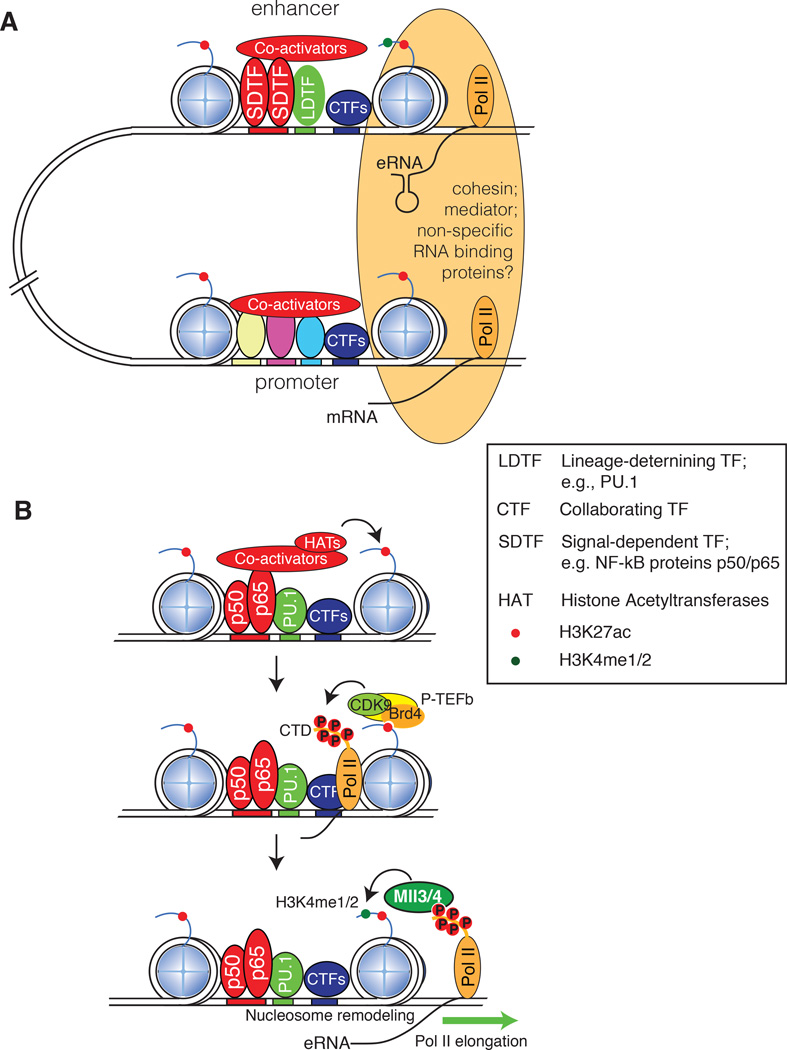Figure 4.
Enhancer activation and function. A. Interactions between enhancers and promoters involve structural connections (orange oval) that include cohesin and the mediator complex to promote pre-initiation complex formation, initiate transcription and/or overcome Pol II pausing. A potential role of enhancer RNAs (eRNAs) could be to promote transcription by facilitating chromatin looping, possibly by mediating interactions with cohesin. Another potential role could be to mediate interactions with protein complexes required for transcriptional elongation, such as the mediator complex. LDTFs, lineage-determining transcription factors; CTFs, collaborating transcription factors; SDTFs, signal-dependent transcription factors. B. Potential roles of enhancer transcription. In activated macrophages the NF-κB proteins p50 and p65 are signal-dependent transcription factors and PU.1 is a lineage-determining transcription factor that collaboratively select de novo enhancers. The subsequent recruitment of histone acetyltransferases (HAT) results in histone acetylation, which is bound by the Brd4 component of the P-TEFb complex, allowing its Cdk9 component to phosphorylate the C-terminal domain (CTD) of Pol II. Phosphorylated CTD acts as docking sites for the MLL3 and MLL4 histone H3K4 methyltransferases. MLL3 and MLL4 are proposed to deposit H3K4me1 and H3K4me2 during successive rounds of Pol II elongation.

